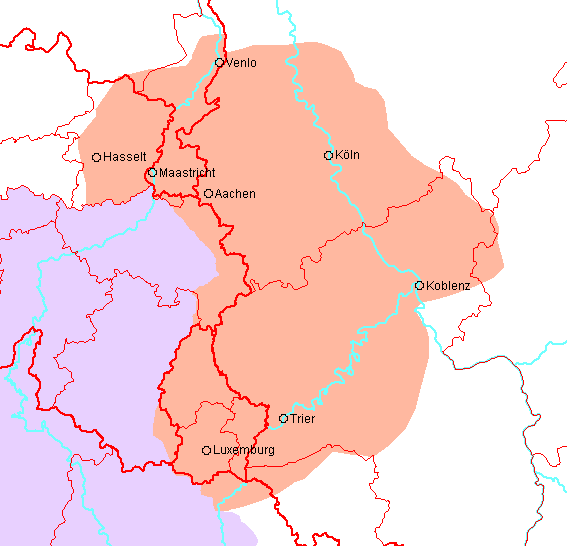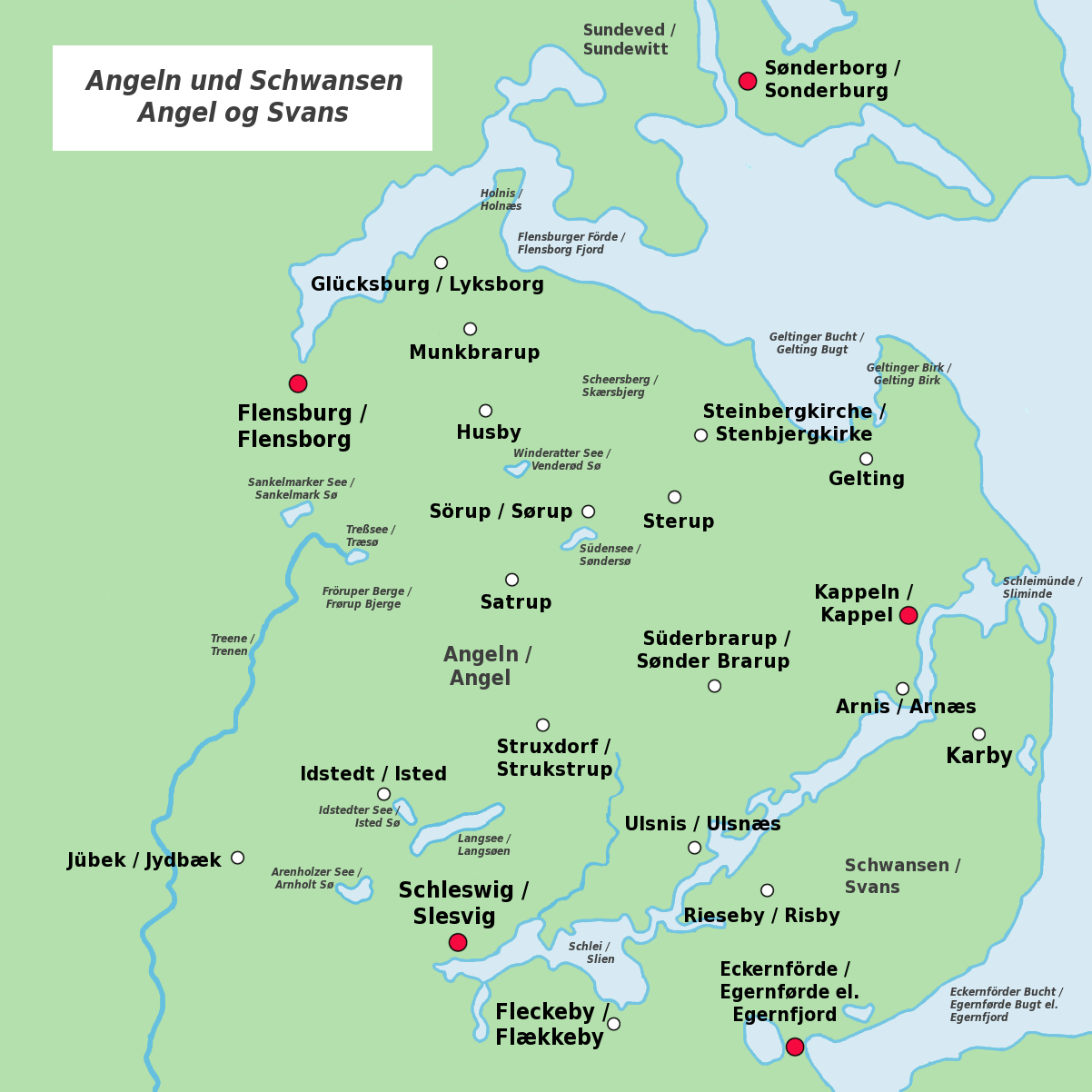|
Danish Dialects
The Danish language has a number of regional and local dialect varieties. These can be divided into the traditional dialects, which differ from modern Standard Danish in both phonology and grammar, and the Danish accents, which are local varieties of the standard language distinguished mostly by pronunciation and local vocabulary colored by traditional dialects. Traditional dialects are now mostly extinct in Denmark, with only the oldest generations still speaking them. The traditional dialects are generally divided into three main dialectal areas: Jutlandic dialect, Insular Danish, and East Danish. Since the Swedish conquest of the Eastern Danish provinces Skåne, Halland and Blekinge in 1645/1658, the Eastern Danish dialects there have come under heavy Swedish influence. Many residents now speak regional variants of Standard Swedish. However, many researchers still consider the dialects in Scania, Halland () and Blekinge () as part of the East Danish dialect group. The Swedi ... [...More Info...] [...Related Items...] OR: [Wikipedia] [Google] [Baidu] |
Southern Schleswig Danish
Southern Schleswig Danish (, ) is a variety of the Danish language spoken in Southern Schleswig in Northern Germany. It is a variety of Standard Danish () influenced by the surrounding German language in relation to prosody, syntax and morphology, used by the Danish minority in Southern Schleswig. Originally Southern Jutlandic was spoken in most parts of the area (in the variants of Angel Danish and Mellemslesvigsk). On the western coast, North Frisian was also spoken. After the language shift in the 18th, 19th and 20th centuries, most of the Danish and North Frisian dialects were replaced by Low and Standard German. Accordingly, there is a Northern Schleswig variety of German language in Northern Schleswig. A similar phenomenon is Gøtudanskt on the Faroe Islands The Faroe Islands ( ) (alt. the Faroes) are an archipelago in the North Atlantic Ocean and an autonomous territory of the Danish Realm, Kingdom of Denmark. Located between Iceland, Norway, and the United ... [...More Info...] [...Related Items...] OR: [Wikipedia] [Google] [Baidu] |
Als (island)
Als (, ) is a Denmark, Danish island in the Baltic Sea. Geography Als lies to the east of the Jutland peninsula, and north of the coast of Southern Schleswig, Germany. Covering an area of , the island has a total population of 51,322 as of 1 January 2010."Danmarks Statistik." Retrieved 28 June 2010. It is administered as part of the Sønderborg Municipality as of 1 January 2007. To the north and east of the island are the waters of the Little Belt, to the south is Flensburg Fjord, Flensborg Fjord, and to the west is Als Fjord and Als Strait (''Alssund''). The town of Sønderborg is the capital, and was originally entirely on the island, but has spread onto the mainland, being split by the waters of Als Strait: the strait that separates the island from Jutland, the Danish mainland and part of Als Fjord. It ha ... [...More Info...] [...Related Items...] OR: [Wikipedia] [Google] [Baidu] |
Pitch Accent
A pitch-accent language is a type of language that, when spoken, has certain syllables in words or morphemes that are prominent, as indicated by a distinct contrasting pitch (music), pitch (tone (linguistics), linguistic tone) rather than by volume or length, as in some other languages like English language, English. Pitch-accent languages also contrast with fully tonal languages like Vietnamese language, Vietnamese, Thai language, Thai and Standard Chinese, in which practically every syllable can have an independent tone. Some scholars have claimed that the term "pitch accent" is not coherently defined and that pitch-accent languages are just a sub-category of tonal languages in general. Languages that have been described as pitch-accent languages include: most dialects of Serbo-Croatian, Slovene language, Slovene, Baltic languages, Ancient Greek, Vedic Sanskrit, Tlingit language, Tlingit, Turkish language, Turkish, Japanese language, Japanese, Limburgish, Norwegian language, No ... [...More Info...] [...Related Items...] OR: [Wikipedia] [Google] [Baidu] |
Isoglosses
An isogloss, also called a heterogloss, is the geographic boundary of a certain linguistic feature, such as the pronunciation of a vowel, the meaning of a word, or the use of some morphological or syntactic feature. Isoglosses are a subject of study in dialectology, in which they demarcate the differences between regional dialects of a language; in areal linguistics, in which they represent the extent of borrowing of features between languages in contact with one another; and in the wave model of historical linguistics, in which they indicate the similarities and differences between members of a language family. Major dialects are typically demarcated by ''bundles'' of isoglosses, such as the Benrath line that distinguishes High German from the other West Germanic languages and the La Spezia–Rimini Line that divides the Northern Italian languages and Romance languages west of Italy from Central Italian dialects and Romance languages east of Italy. However, an ''individual'' ... [...More Info...] [...Related Items...] OR: [Wikipedia] [Google] [Baidu] |
Stød
Stød (, also occasionally spelled stod in English) is a suprasegmental unit of Danish phonology (represented in non-standard IPA as ), which in its most common form is a kind of creaky voice (laryngealization), but it may also be realized as a glottal stop, especially in emphatic pronunciation. Some dialects of Southern Danish realize stød in a way that is more similar to the tonal word accents of Norwegian and Swedish. In much of Zealand it is regularly realized as reminiscent of a glottal stop. A probably unrelated glottal stop, with quite different distribution rules, occurs in Western Jutland and is known as the ('West Jutland stød'). The noun ''stød'' itself does not have a stød. Phonetics The stød has sometimes been described as a glottal stop, but acoustic analyses have shown that there is seldom a full stop of the airflow involved in its production. Rather it is a form of laryngealization or creaky voice, that affects the phonation of a syllable by dividing it ... [...More Info...] [...Related Items...] OR: [Wikipedia] [Google] [Baidu] |
Angel Danish
Angel Danish (German: ''Angeldänisch'', Danish: ''Angeldansk'' or ''Angelbomål'') was a variant of South Jutlandic spoken in the regions of Angeln and Schwansen in Southern Schleswig partly until the 20th century. Both landscapes belonged to the Danish Duchy of Schleswig until 1864, since then to Germany. Characteristic of Angel Danish was, among other things, the tonal pitch accent (like in the Danish dialects of Als and Langeland as well as in Swedish and Norwegian) and the fricative for the hard ''G'' (like today in the Angel Low German). There were also elevations from /o/ to /u/ (instead of Danish ''honning'' it was ''hunne'' in Angel Danish, cf. Icelandic ''hunang''). There were also older Nordic forms such as ''hvénner'' (German ''wenn'', Danish ''hvornår'', Old Norse ''hvenær''), ''mjølk'' (German ''Milch'', Danish ''mælk'', Old Norse ''mjólk'') or ''gut'' (German ''Junge'', Danish ''dreng'', Norwegian ''gutt''). However, there were also adoptions from Germa ... [...More Info...] [...Related Items...] OR: [Wikipedia] [Google] [Baidu] |
South Jutlandic
South Jutlandic or South Jutish ( South Jutish: ; ; ) is a dialect of the Danish language. South Jutlandic is spoken in Southern Jutland (''Sønderjylland''; also called Schleswig or Slesvig) on both sides of the border between Denmark and Germany. Variants of the dialect include Western and Eastern South Jutlandic (including Alsisk). The former variant in Angeln (Danish: ''Angel'') and Schwansen (''Svansø'') was known as Angel Danish. The other dialects classified as belonging to the Jutlandic or Jutish (''Jysk'') group of dialects are West, East, and North Jutlandic. Usage Northern Slesvig Many older people will still speak a distinct South Jutlandic dialect, both in towns and rural areas. Younger people and children are more likely to use a dialect-tinted version of Standard Danish, but everything ranging from relatively pure dialect to Standard Danish can be found. Many are able to switch between both varieties. A renewed popular interest in preserving the ... [...More Info...] [...Related Items...] OR: [Wikipedia] [Google] [Baidu] |
Scanian Dialect
Scanian ( ) is an East Scandinavian dialect spoken in the province of Scania in southern Sweden. Broadly speaking, Scanian has been classified in three different ways: # Older Scanian formed part of the old Scandinavian dialect continuum, and is by most historical linguists considered to be an East Danish dialect group. # Due to the modern-era influence from Standard Swedish in the region, and because traditional dialectology in the Scandinavian countries normally has not considered isoglosses that cut across state borders, the Scanian dialects have normally been treated as part of the South Swedish dialects by Swedish dialectologists. # Many of the early Scandinavian linguists, including Adolf Noreen and G. Sjöstedt, classified it as "South Scandinavian", and some linguists, such as Elias Wessén, also considered Old Scanian a separate language, classified apart from both Old Danish and Old Swedish. Status There has been active campaigning from local Scanian interest ... [...More Info...] [...Related Items...] OR: [Wikipedia] [Google] [Baidu] |
Gutnish
Gutnish ( ), or rarely Gutnic ( or ), is a North Germanic language spoken sporadically on the islands of Gotland and Fårö. The different dialects of Gutnish, while stemming from the Old Gutnish () variety of Old Norse, are sometimes considered part of modern Swedish. Gutnish exists in two variants, Mainland Gutnish (''Storlandsgutamål'' or ''Storlandsmål''), mostly spoken in the southern and southeastern portion of Gotland, where the dialect of Lau became the standard form on the Main Island (''Lau Gutnish'' → ''Laumål''), and Fårö Gutnish (Gutnish: ''Faroymal''; ), spoken on the island of Fårö. UNESCO defines Gutnish as a " definitely endangered language" as of 2010. Some features of Gutnish include the preservation of Old Norse diphthongs like ''ai'' in for instance (; English: ''stone'') and ''oy'' in for example (; English: ''die''). There is also a triphthong that exists in no other Norse languages: ''iau'' as in / (; English: ''shoot''). Many Gotlanders do ... [...More Info...] [...Related Items...] OR: [Wikipedia] [Google] [Baidu] |
North Frisian Language
North Frisian is a minority language of Germany, spoken by about 10,000 people in North Frisia. The language is part of the larger group of the West Germanic Frisian languages. The language comprises 10 dialects which are themselves divided into an insular and a mainland group. North Frisian is closely related to the Saterland Frisian language of Northwest Germany and West Frisian which is spoken in the Netherlands. All of these are also closely related to the English language forming the Anglo-Frisian group. The phonological system of the North Frisian dialects is strongly being influenced by Standard German and is slowly adapting to that of the German language. With a number of native speakers probably even less than 10,000 and decreasing use in mainland North Frisia, the North Frisian language is endangered. It is protected as a minority language and has become an official language in the Nordfriesland district and on Heligoland island. Classification The closest relati ... [...More Info...] [...Related Items...] OR: [Wikipedia] [Google] [Baidu] |




